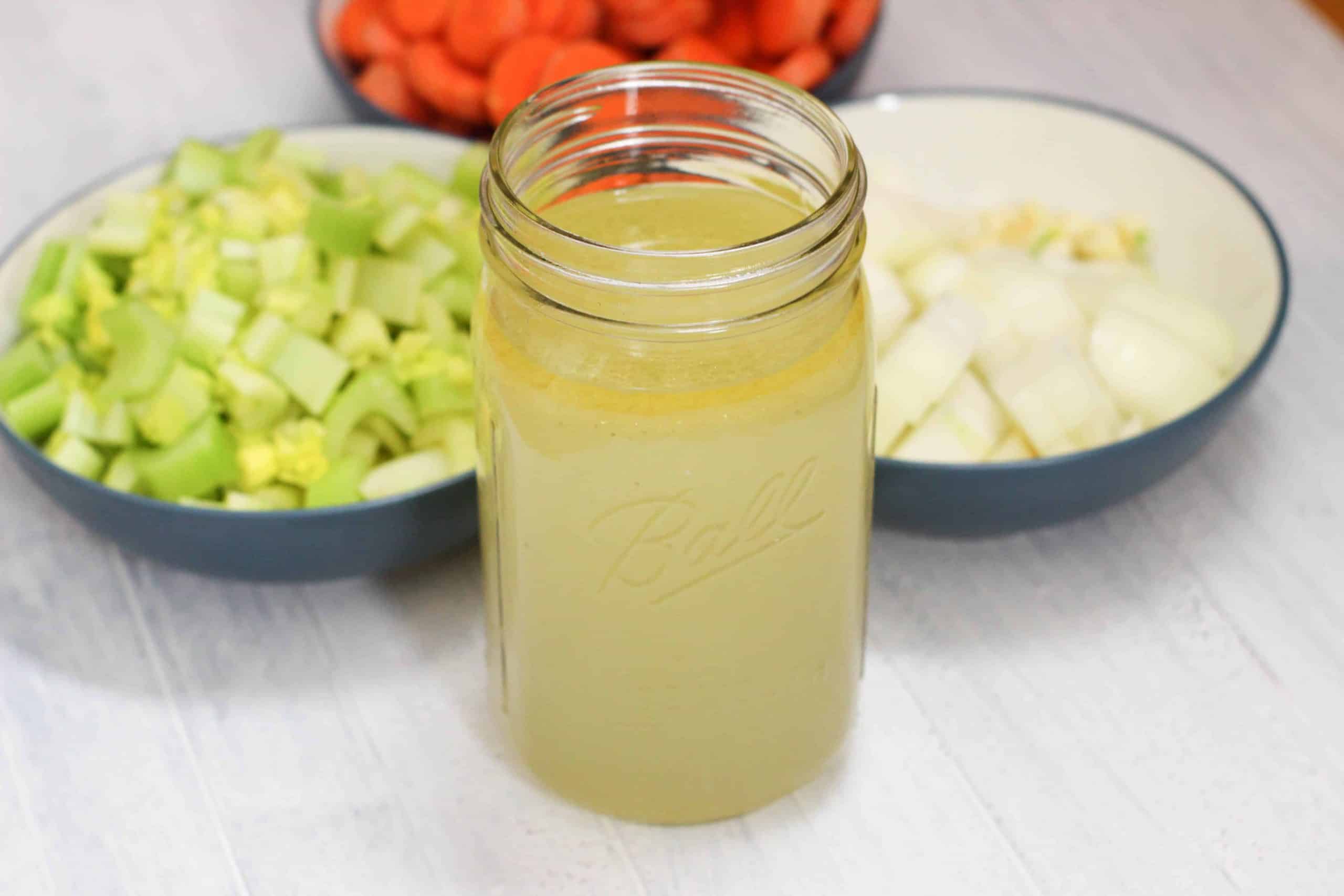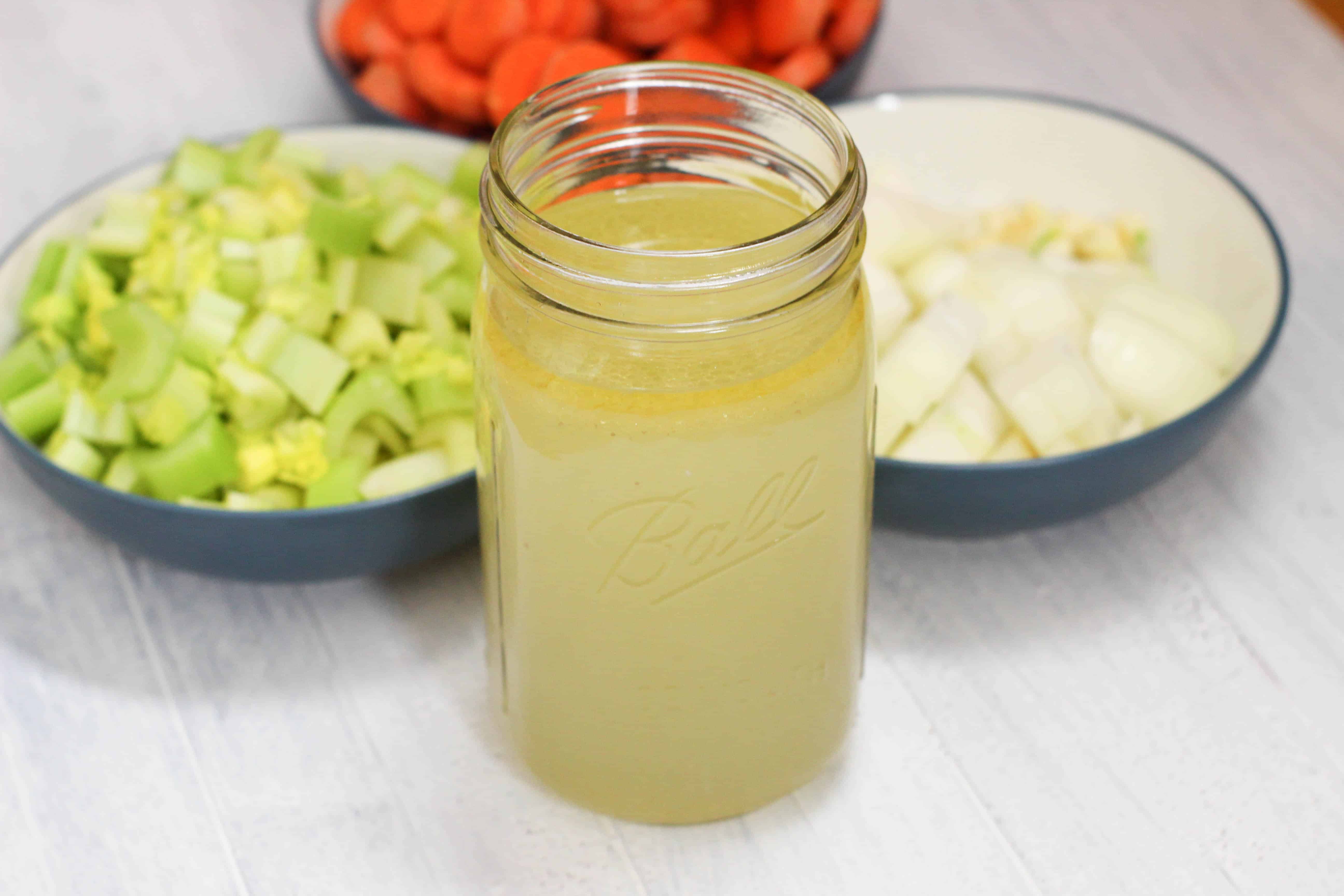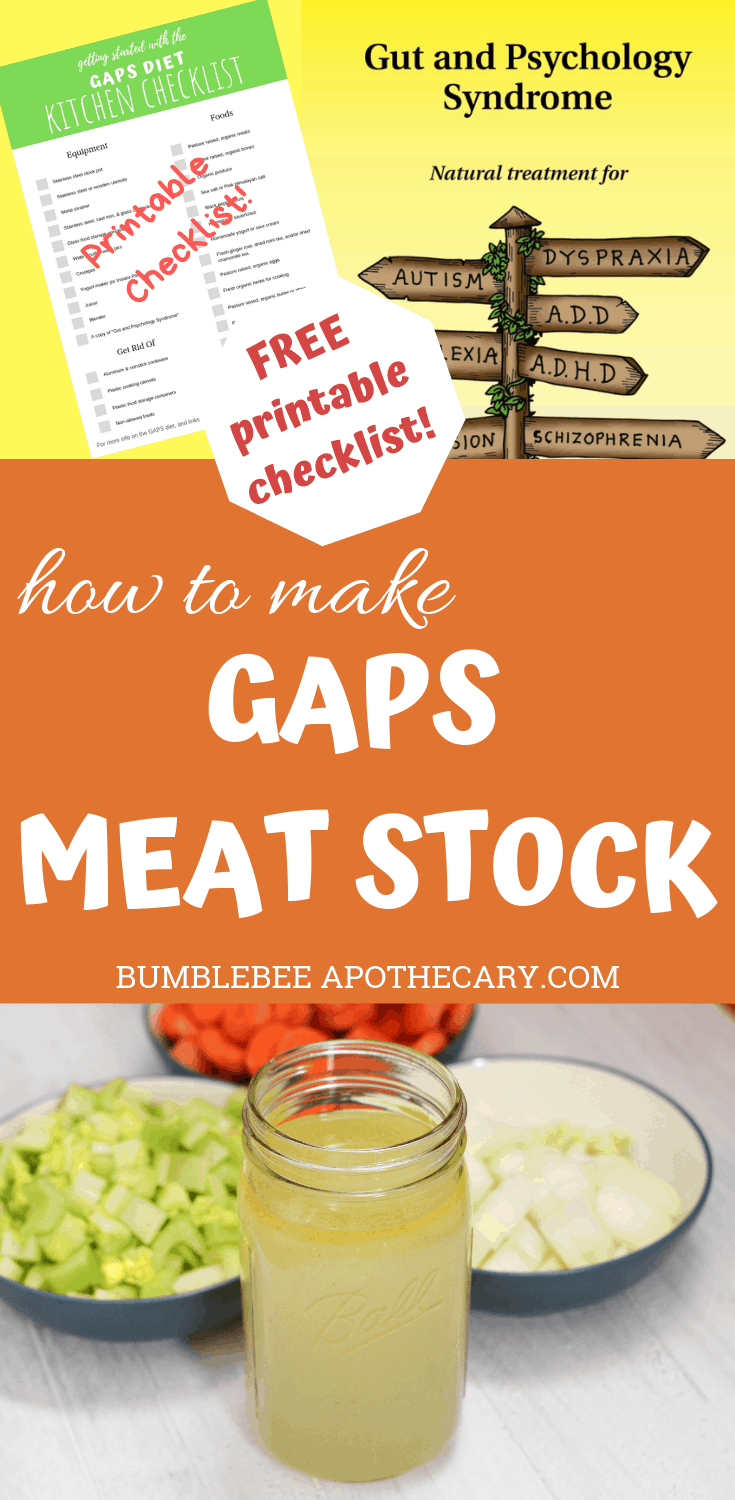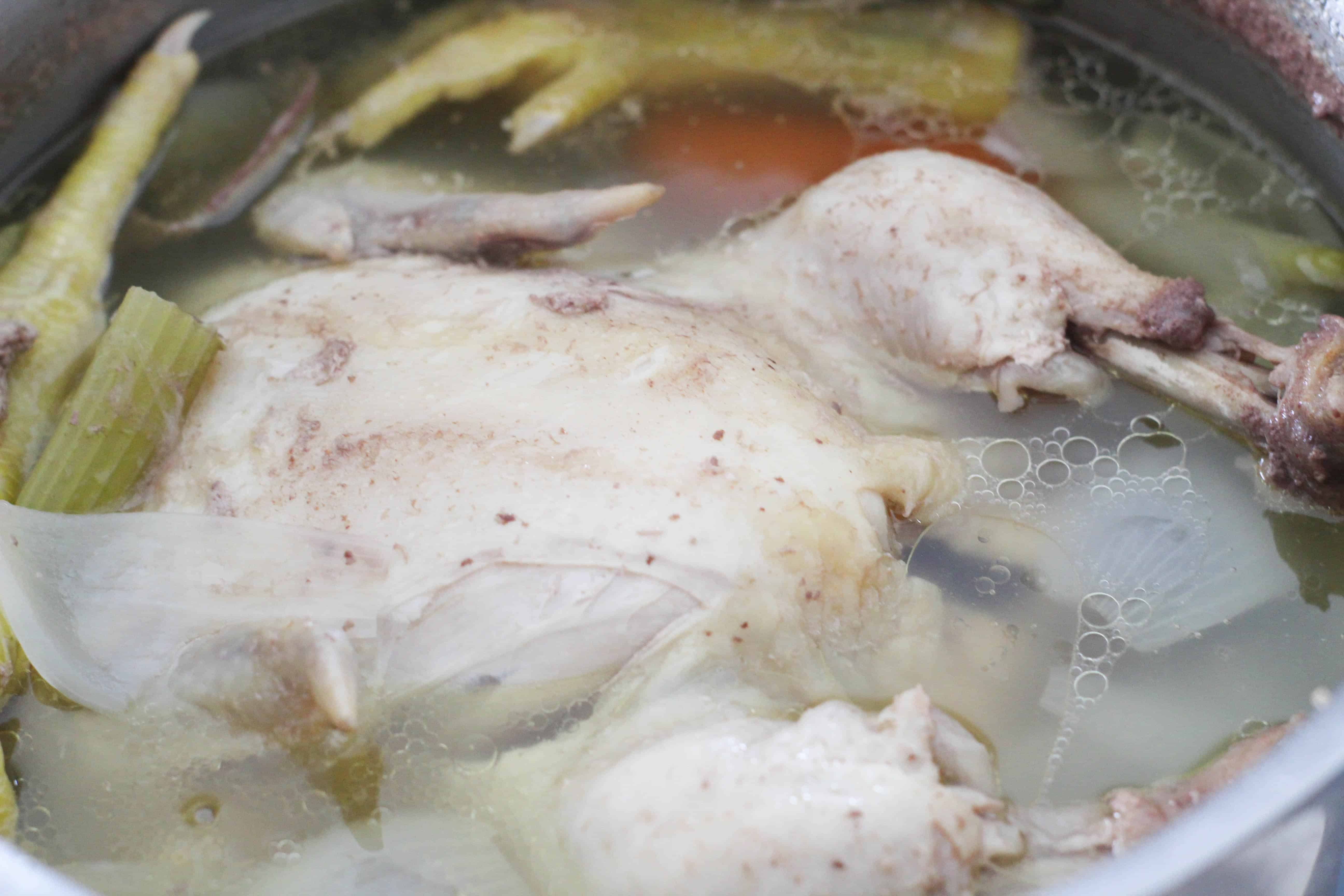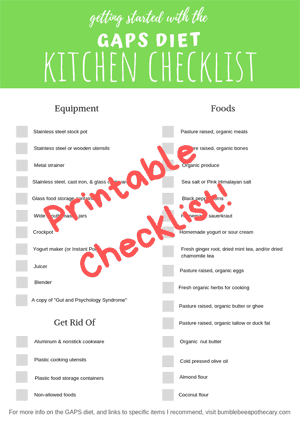Meat stock is one of the most important foods on the GAPS diet, especially in the beginning. Learn how to easily make it with this simple meat stock recipe.
Meat stock recipe for the GAPS diet
We’re ready to dive into the fun, hands on part, where we make some delicious, healing recipes! Meat stock is one of the first things you need to know how to make when starting the GAPS diet.
If you’re new to my blog, I recommend checking out my post on getting started with the GAPS diet. In it, I go over everything you need to know before you begin.
I also have a series called “The GAPS Diet for Dummies.” In that series, I go over how the GAPS diet works and why we do what we do, in an easy to understand way. I recommend checking those posts out if you haven’t already seen them.
Looking for a GAPS diet meal plan? Check out GAPS to Go, my 30 day meal plan for GAPS intro here.
Need help overcoming picky eating? Get my Picky Eating Blueprint: Empowering parents of picky eaters with confidence to transform their child’s relationship with food in three weeks or less. Check out Picky Eating Blueprint here.
Pin it for later
This post contains affiliate links, which means I make a small commission at no extra cost to you. Get my full disclosure here.
Meat stock and bone broth: what’s the difference?
You might have heard the terms meat stock and bone broth talked about in connection with healing diets, or when discussing traditional cooking. Sometimes they’re used interchangeably. In the culinary world, the terms are used differently than they are within the scope of the GAPS diet. It can all be a little confusing!
Meat stock and bone broth are different. The difference lies in the cooking time, and the types of bones used.
Bone broth is made using bones with little or no meat cooked longer, usually twelve to twenty-four hours, or perhaps even longer, depending on the kind of bones used. The cooking time for meat stock is much shorter, usually only one and a half to two hours, and meat stock is made using meaty bones.
Why the different cooking times? Well, a longer cooking time extracts more nutrients from the bones and tissues. From a long term perspective, bone broth is more nutritious. However, bone broth can often cause a strong detox or die off reaction for those who are just starting the early stages of the GAPS diet.
In order to avoid that, meat stock is usually the best option for those very first stages. Meat stock is very gentle, while still being very healing to the gut. It is full of gelatin and other nutrients that help to quickly heal the gut lining.
How to make meat stock
Making meat stock is actually really simple and easy. It can be as simple as putting a whole chicken in a pot, adding some salt, and covering it with water. Most of the time though, it’s nice to add some more ingredients to make it tastier.
You can make meat stock either with raw chicken bones, necks, and feet, or a whole chicken. I prefer using a whole chicken, since cooking the entire chicken also gives me a lot of cooked chicken meat to use in other recipes. Multitasking is always a good way to go, especially with kitchen tasks!
It is best if the chicken used to make this meat stock recipe is pasture raised, and preferably organically fed. Animals raised on pasture are much healthier and provide many more nutrients than animals that are not raised on pasture.
I like to super charge my meat stock by adding a secret ingredient: chicken feet! That’s right, chicken feet are full of so much beneficial gelatin that is so essential for healing the gut. If you don’t have access to chicken feet, don’t worry. You can definitely just leave them out. But if you do have access to them, I highly recommend adding them.
We raised our own organic, pastured meat chickens last summer, and plan to do the same thing this year. From that, we have a lot of chicken feet in our freezer. If you buy chickens from a local farmer, be sure to ask for the feet and necks, as they’re a really beneficial addition to stock and broth.
You can also often find chicken feet at local natural food markets. If you don’t see them, ask the store manager to start carrying them.
Beautiful vegetables
A variety of vegetables really help to give the meat stock a great flavor. I like to add onions, some garlic cloves, carrots, celery, and parsley. Of course, if you’re sensitive to any of these, you can definitely leave them out.
But for most people, they add to the healing and nutrients of the meat stock. Ideally, all of the vegetables used for GAPS diet recipes should be organic. We want to be lessening the toxic load on our bodies as much as possible.
When adding the vegetables, you can leave them in big chunks. For example, I cut the onions in quarters and leave the garlic cloves whole. I cut the carrots and celery into big chunks, and leave the parsley whole.
These ingredients are added only for flavor, so they don’t need to be cut any smaller than that. After the meat stock is finished cooking, we’ll just discard (hopefully compost!) them.
Don’t forget the salt
A good salt is a vital part of making meat stock. Without enough good quality salt, meat stock won’t taste as good. With a whole, unrefined salt, such as Celtic sea salt or pink Himalayan salt, the meat stock will have a full, delicious flavor. Good salt also adds lots of beneficial minerals.
There’s no need to fear eating plenty of salt, either! Salt is one of those things that we really do need for good digestive health. I recommend adding it generously to taste.
Water water everywhere
Another really important part of good meat stock is the water you use. We have a Berkey water filter, and use that for all of our drinking and cooking water. In the research that I did, it is one of the best water filters available. This is my Berkey water filter review for the water filter system we use in our home.
If you don’t have a good water filter, I highly recommend looking into getting one. In the meantime, using bottled water from the store would be a better choice than unfiltered tap water, which is often full of chlorine and fluoride and other toxins.
Cooking time
Like I mentioned before, the cooking time for meat stock is pretty short. Two hours is what I usually do, although a little shorter will also work.
After the cooking is finished, the broth is ready for use. I like to remove the whole chicken, let it cool a bit, and then remove the meat and save it for other recipes.
Once the stock has had a little time to cool, it’s time to store it. My favorite storage container for meat stock is a good old mason jar.
One tip about filling mason jars is to make sure the stock goes in slowly, especially if it is still hot at all. If you quickly pour hot meat stock into a glass jar, you risk breaking the jar. If you go slowly and give the glass time to heat up, it should be fine.
Storage
Meat stock will keep in the refrigerator for about a week to a week and a half. You’ll notice a nice layer of fat that forms on the top of the meat stock. This is a very good thing!
The layer of fat helps keep the meat stock fresh. Definitely don’t get rid of it. Once you use the meat stock in recipes, the fat will melt right in again, and it is very healing.
I’ll be showing how to make a basic GAPS soup recipe in one of my next posts, and I’ll be using this meat stock in that recipe. Stay tuned for that!
GAPS intro diet for toddlers
Even though it’s delicious, kids sometimes need some encouragement to start eating meat stock.
If you’re helping a child start the GAPS diet, you’ll definitely want to check out my guide on the GAPS intro diet for toddlers.
I share all of my tips on getting toddlers to eat GAPS foods, enjoy meat stock, and more.
Meat stock recipe directions
Ingredients:
- 1 whole chicken, preferably pasture raised
- 2-5 chicken feet (optional)
- 4 quarts filtered water
- 1-2 onions
- 2-3 garlic cloves
- 2-4 carrots
- 2-4 celery stalks
- 1-2 tsp sea salt
- 1 bunch parsley
Instructions:
- Rinse chicken and feet and put them in a stockpot.
- Add coarsely chopped vegetables and salt.
- Cover everything with filtered water.
- Bring pot to a boil.
- Reduce heat to a simmer and allow to cook for 1 1/2 to 2 hours, no longer.
- Add parsley during the last 10 minutes of cooking.
- Remove chicken from pot.
- Reserve chicken meat for other recipes.
- Allow stock to cool slightly.
- Strain stock and pour slowly into glass jars.
- Allow stock to cool to room temperature and then store in the refrigerator.
More GAPS diet resources
How the GAPS Diet Changed Our Lives
The GAPS Diet Explained in a Nutshell
Getting Started with the GAPS Diet: What You Need to Know Before You Begin
The GAPS Diet for Dummies Series:
Have you made meat stock or bone broth before?
What are some of your favorite things to add? Let me know in the comments!
Join our traditional health community, and grab a free printable GAPS diet kitchen checklist when you subscribe!
 Shop this post
Shop this post
The GAPS Diet Book: Gut and Psychology Syndrome by Dr. Natasha Campbell-McBride
Looking for a GAPS intro meal plan?
GAPS to Go is a 30 day meal plan for the GAPS introduction diet that tells you what to eat each day, with complete cooking instructions, and guidance on when to move to each intro diet stage. Check out GAPS to Go here.
Follow along with Bumblebee Apothecary
Thanks for stopping by! Be well!
GAPS™ and Gut and Psychology Syndrome™ are the trademark and copyright of Dr. Natasha Campbell-McBride.
If you make this recipe and love it, please give it 5 stars! Also, tag me on Instagram @bumblebeeapothecary
Meat Stock
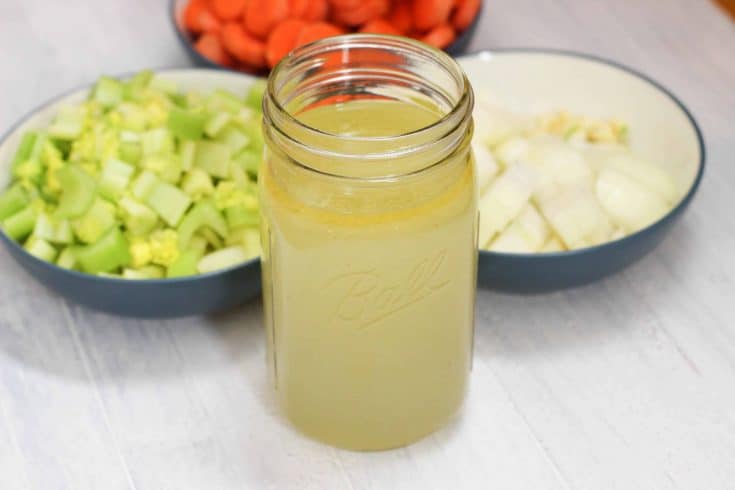
Meat stock is one of the most important foods on the GAPS diet, especially in the beginning. Learn how to easily make it with this simple meat stock recipe.
Ingredients
- 1 whole chicken, preferably pasture raised
- 2-5 whole chicken feet, optional
- 4 quarts filtered water
- 1-2 quartered onions, preferably organic
- 2-3 whole garlic cloves, preferably organic
- 2-4 quartered carrots, preferably organic
- 2-4 quartered celery stalks, preferably organic
- 1-2 tsp sea salt, unrefined
- 1 bunch parsley, preferably organic
Instructions
- Rinse chicken and feet and put them in a stockpot.
- Add coarsely chopped vegetables and salt.
- Cover everything with filtered water.
- Bring pot to a boil.
- Reduce heat to a simmer and allow to cook for 1 1/2 to 2 hours, no longer.
- Add parsley during the last 10 minutes of cooking.
- Remove chicken from pot.
- Reserve chicken meat for other recipes.
- Allow stock to cool slightly.
- Strain stock and pour slowly into glass jars.
- Allow stock to cool to room temperature and then store in the refrigerator.
Recommended Products
As an Amazon Associate and member of other affiliate programs, I earn from qualifying purchases.
Nutrition Information:
Yield:
4Serving Size:
1 quartsAmount Per Serving: Calories: 2191Total Fat: 122gSaturated Fat: 34gTrans Fat: 0gUnsaturated Fat: 75gCholesterol: 789mgSodium: 1997mgCarbohydrates: 11gFiber: 3gSugar: 4gProtein: 246g

